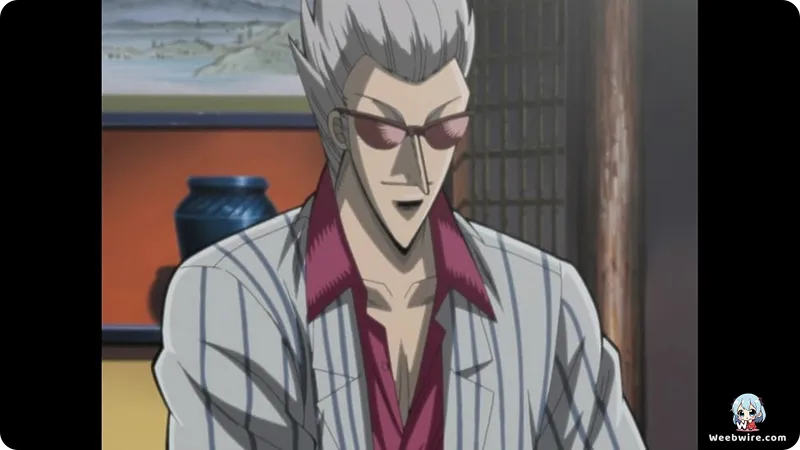The 13-Year-Old 'God of Mahjong': Unpacking the Unrelenting Psychological Genius of Nobuyuki Fukumoto's Akagi

While the anime landscape often celebrates physical spectacles and grand fantasy epics, few series dare to delve into the chilling, existential abyss of high-stakes intellectual combat quite like Akagi: Yami ni Oritatta Tensai. Adapted by Studio MADHOUSE in 2005 from the celebrated manga by the master of gambling narrative, Nobuyuki Fukumoto, this series transcends the sports genre. It functions instead as a rigorous, clinical examination of human psychology under duress, risk calculation, and the unique brand of calculated madness required to stare down fate at the mahjong table. For dedicated fans and newcomers alike, the production choices and inherent complexities of Akagi reveal why it remains a unique and revered entry in the thriller catalog.
The Visual Language of Fukumoto-ism
Central to the show's intense atmosphere is the distinctive visual language often dubbed "Fukumoto-ism." Fukumoto’s signature aesthetic defined by hyper-angular facial structures, dramatically long noses, and meticulously rendered sweat beads is more than just a stylistic choice; it serves as a powerful instrument for psychological amplification. MADHOUSE faced the formidable challenge of translating these famously static, tense manga panels into dynamic animation. They achieved this by masterfully employing deep shadows, minimal but deliberate character movement, and extreme close-ups, ensuring that the pervasive anxiety and the crushing weight of every decision are intensely palpable.

This visual commitment ensures that the psychological torment experienced by the players, contrasting sharply with protagonist Akagi's unsettling composure, is immediately conveyed to the audience.
The Enigma of Shigeru Akagi
A piece of trivia often surprising to new viewers concerns the legendary anti-hero, Shigeru Akagi, who is only 13 years old at the narrative's outset. Despite his youth, he possesses an immediate, almost preternatural mastery of the game, paired with a profound, philosophical resignation toward risk and mortality. Akagi is not a figure who undergoes conventional growth; he bursts onto the scene as an already fully realized, flawless entity a force of pure, innate genius. His initial appearance stumbling into a mahjong parlor to evade police and instantly replacing a paralyzed gambler establishes his mythological status. His early age dramatically underscores his radical separation from societal norms. For Akagi, gambling is not about financial gain or notoriety, but the sublime thrill of confronting death itself, a drive that defines his entire existence and earns him the fan-bestowed moniker, the "God of Mahjong."
Intellectual Rigor and Narrative Scaffolding
The series' intellectual rigor is another key distinguishing factor. Unlike competitive anime that often simplify rules for mass appeal, Akagi refuses to dilute the complex strategies of Japanese mahjong. The adaptation plunges headfirst into technical strategies, tile counting, and probability theory. The brilliance of the animation adaptation lies in its use of a highly analytical, omniscient narrator. This unseen character is perhaps the most critical element, meticulously breaking down the players' mental states, the statistical impossibility of certain plays, and the strategic implications of every tile discarded. This narrative scaffolding transforms the mahjong games from mere contests into gripping, intellectual duels fueled purely by nerve and calculation.
Context within Fukumoto's Canon
Finally, Akagi holds significant weight within Fukumoto’s broader fictional canon, serving as an essential prequel to his other classic work, Ten: Tenhō-dōri No Kaidan. While Akagi chronicles Shigeru’s explosive rise in youth, Ten features his older, more established self, offering a vital conclusion to his legendary career. The anime adaptation primarily covers Akagi's formative years, concluding right before the prolonged, legendary Washizu arc. MADHOUSE's dedication to slow, deliberate pacing and intense internal monologues, prioritizing intellectual integrity over mainstream accessibility, cemented Akagi’s place as a seminal psychological thriller.
Credits
Akagi: Yami ni Oritatta Tensai
Author
Nobuyuki Fukumoto
Cover Art
Nobuyuki Fukumoto
Studio
MADHOUSE
Publisher
Takeshobo
Producers





